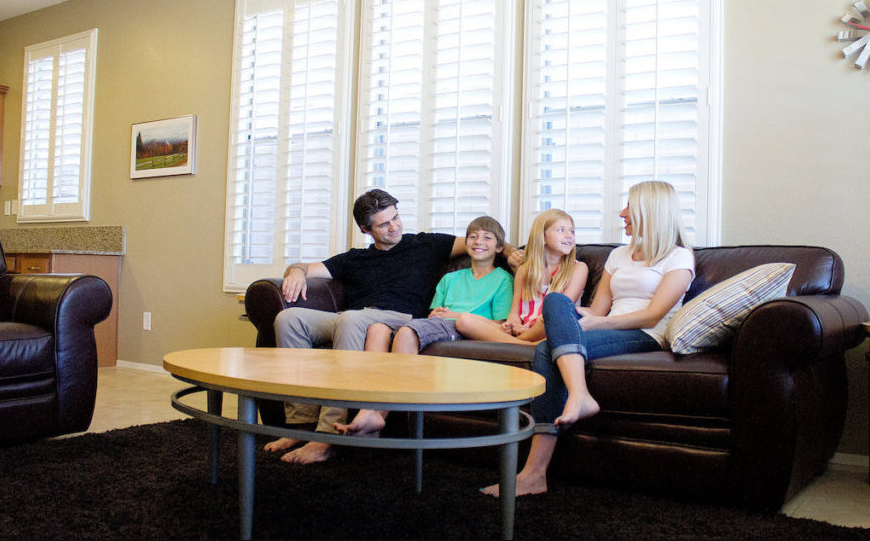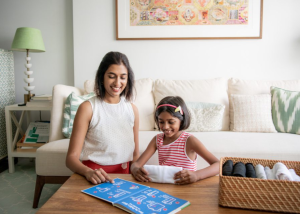If you’re here, you’re probably dreaming of a simpler life as a minimalist family. Still, the reality of a cluttered playroom or overflowing closets may make it seem like an impossible dream. As someone who struggled with emotional attachment to possessions and had to declutter years of accumulated stuff, I understand the challenges. With two active boys and a husband often busy with work, it felt like a constant battle against mess and stress.
However, despite the tough days, transitioning to a minimalist family has proven to be one of the best decisions we’ve ever made. It’s not always easy, but as Nelson Mandela said, “It always seems impossible until it’s done.” Now, looking back, I can confidently say that embracing family minimalism transformed our lives for the better.
What is family minimalism?
Minimalism is a big trend, but most advice is for people without families. If you’re a family trying to be minimalist, that’s impressive. Before we talk about how to do it as a family, let’s understand what minimalism is. It’s not about living in an empty house or following a strict lifestyle. It’s about intentional living—keeping things that matter and getting rid of extra stuff. You don’t have to give up everything or follow a specific look. It’s about making your home and life simpler, giving you more time and space for what’s important. Minimalism is different for everyone, letting you keep things you love and be mindful about what you bring into your life.
Pros & Cons of minimalist family life
Now that you understand that “minimalism” doesn’t require living in a nearly empty white room let’s talk about the advantages and disadvantages of becoming a minimalist family.
After more than 6 years of decluttering and embracing minimal living, our family of four has experienced the benefits of family minimalism, along with challenges and difficulties – and we’ve successfully navigated through them!
Family Minimalism Pros
Here are some advantages we’ve enjoyed as a minimalist family. You can find more information on the scientific support for these benefits in this post about the advantages of being a minimalist.
1. Cleaning takes less time with minimalism. When you own fewer things, you spend less time picking them up and cleaning your home.
2. Save money. Who doesn’t want a bit more money in their pocket each month? Small savings can add up, and you’ll be surprised at the overall amount you can save!
3. Teach children about the importance of belongings. When our homes are filled with too many things, our kids might not fully understand the value of what they have. Just picture how much more fun playtime can be when they are surrounded by their top 3 favorite toys instead of a bunch that they aren’t really interested in.
4. Save time. Minimalism is all about saving time. You’ll be surprised at how much free time you gain when you’re not searching for lost items or spending every evening cleaning the playroom repeatedly. By decluttering your physical belongings, you’ll have more time to engage in activities you enjoy.
5. Simplify your life. While we’ve talked a lot about belongings and the physical side of minimalism, the other part is how it simplifies your life in every way. Both your mind and your home will feel less cluttered, and tasks that might have seemed overwhelming will become more straightforward.
Family Minimalism Cons
When it comes to the downsides of family minimalism, some issues are real, and others are more societal or perceptual. Here’s an honest look at the potential drawbacks of family minimalism so you go into it with your eyes wide open.
1. It’s tougher with kids. It’s basic math; the more people in a home, the harder it is to keep things clutter-free. No matter how minimalist you are, babies and children still need things like clothes, food, bedding, and even TOYS. That said, minimalism with kids is not only doable but also very rewarding.
2. Lack of things and boredom. Some worry that a minimalist life is dull, and minimalists just sit in empty rooms with nothing to do. While minimalists have fewer things, it usually means they have more time to do things they genuinely enjoy. Besides, kids often complain about being bored, whether they have ten or ten thousand toys. Studies even show that kids with fewer toys are happier, more creative, and play longer than those with too many toys.
3. Facing criticism. This is a clear downside for many individuals. Minimalist living goes against the norm, and when you do something different, it may upset some people. You might encounter resistance from grandparents who want to spoil their grandchildren with toys or friends who comment on your home being too clean, empty, or lacking character. Keep in mind that people may judge you for having a neat home just as much as they would for having a messy one, so you decide what you prefer.
4. It seems like a group with strong beliefs. Minimalists often express how transformative minimalism can be! When individuals are very enthusiastic about a specific subject, it might give outsiders the impression of it being a bit like a cult. However, let me clarify, minimalism is not a cult. It’s OK to share your appreciation for minimalism with friends and family, but it’s important to do so respectfully. Avoid imposing your beliefs on them, just as you wouldn’t want them to impose their love for clutter on you.










